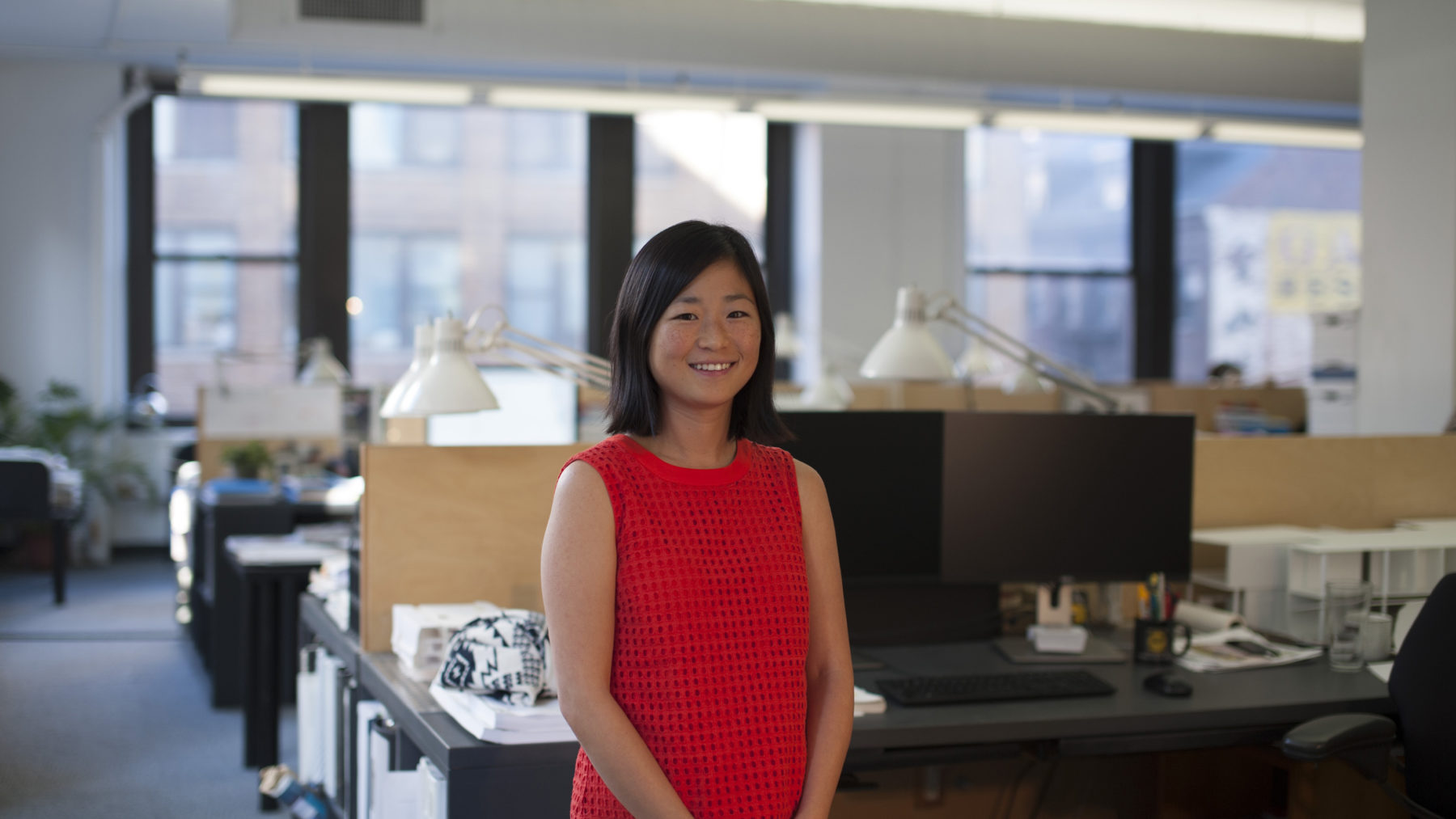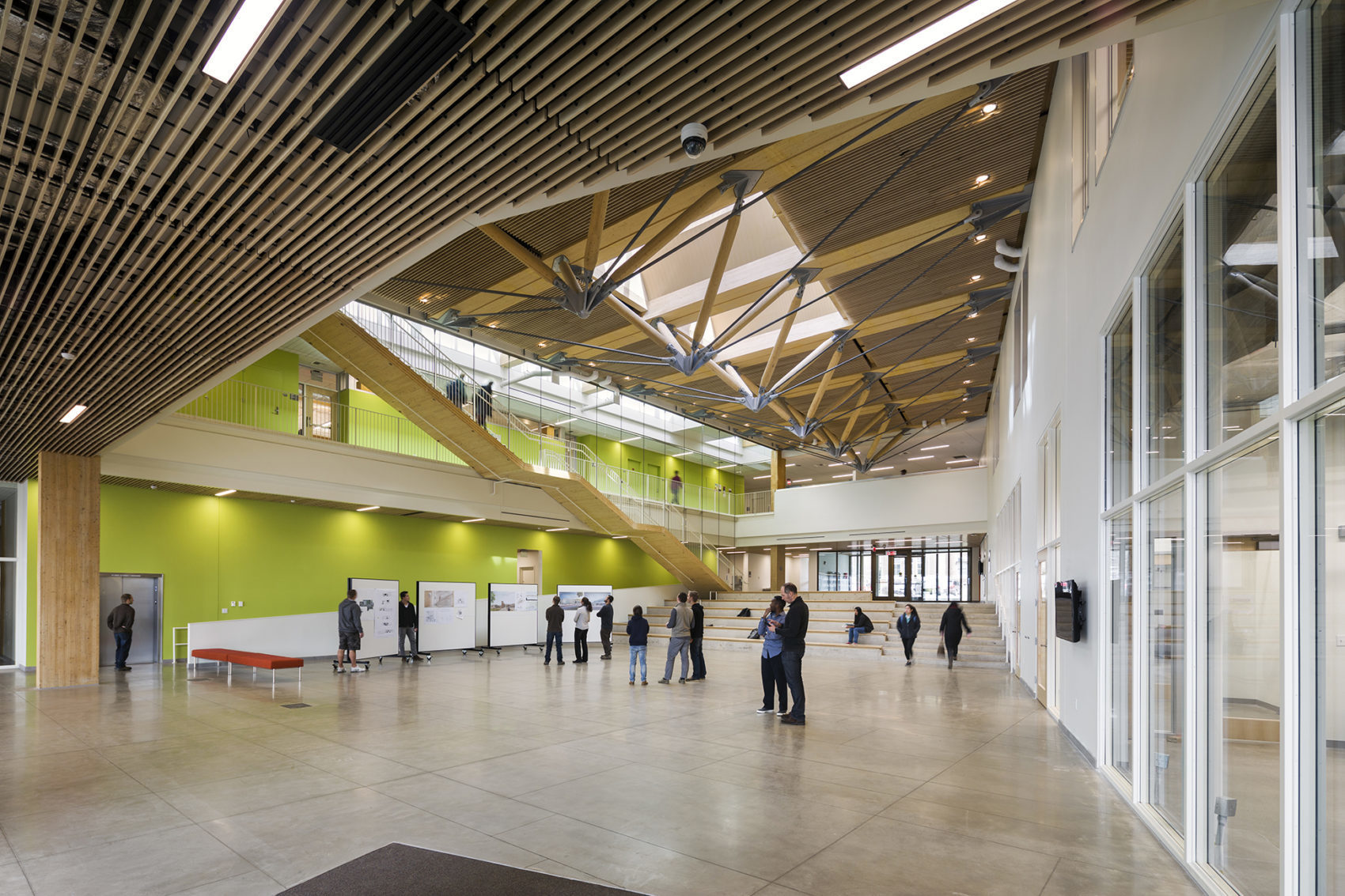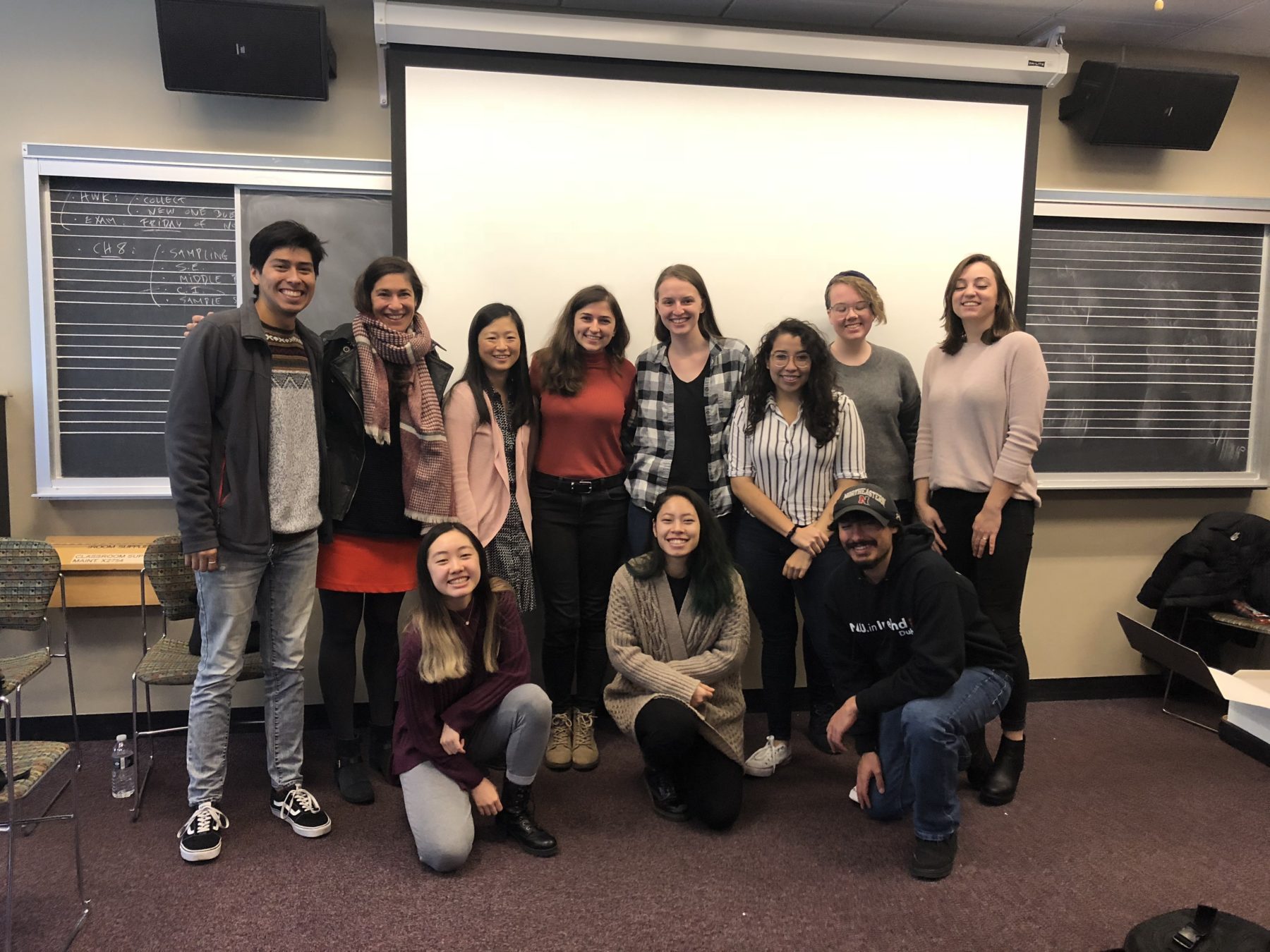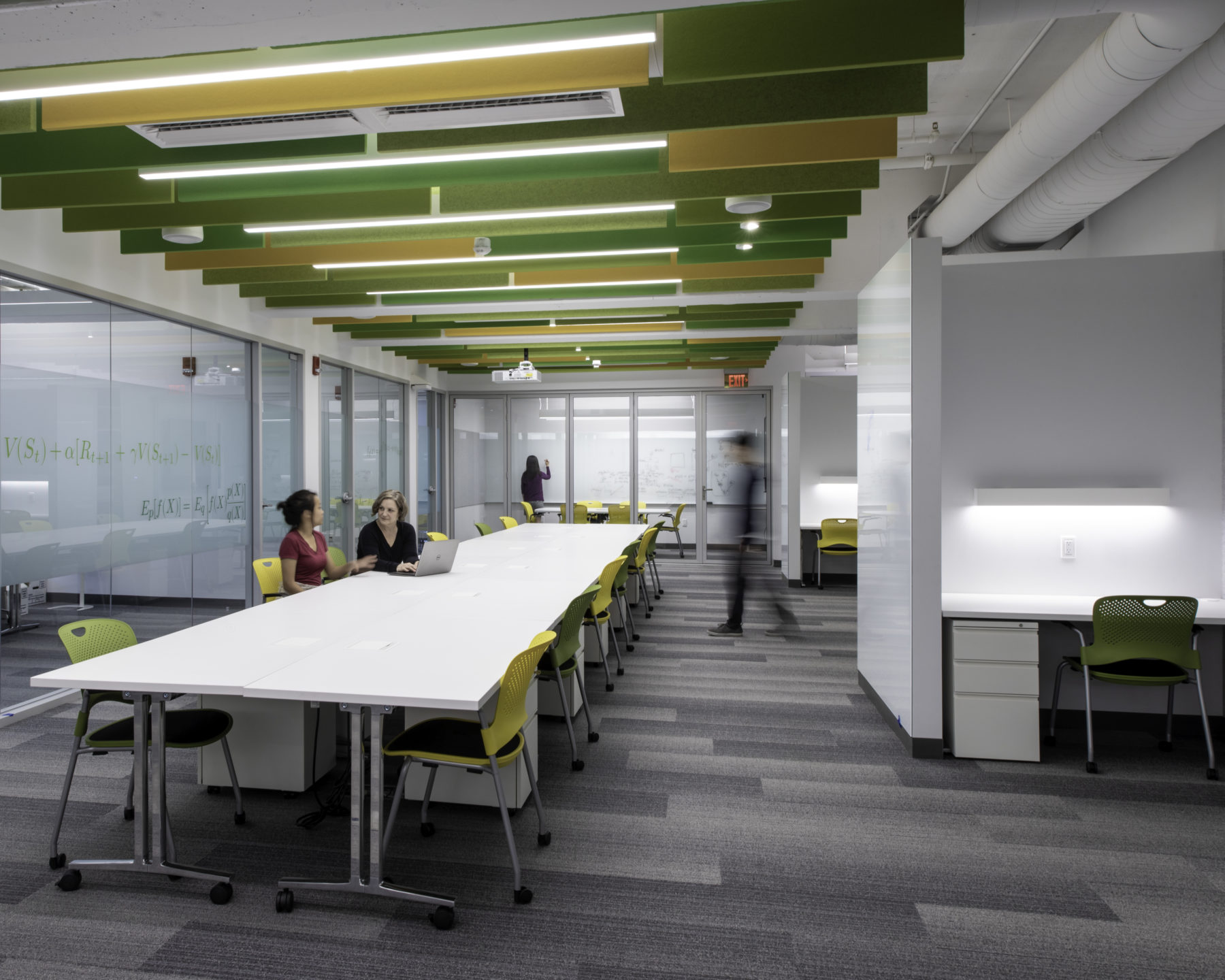Juliet Chun AIA

Associate, Leers Weinzapfel Associates
In celebration of Asian American and Pacific Islander Heritage (AAPI) Month, the BSA is featuring Profiles on Asian Americans in the profession.
Degree:
B.Arch and M.Arch from Northeastern University
Professional Interests:
Equity, creating spaces that bring people together

How has your heritage shaped who you are today?
Growing up, I had the opportunity of experiencing two different cultures—an American and a Korean one. While I didn’t always think of that as an opportunity (why did I have to spend my Saturday mornings in Korean language school?), I soon realized that the things my family did, the food we ate, and the traditions we celebrated were cool. Friends traded their BBQ chicken lunches for my fried rice, classmates loved when I brought in mandu (Korean dumplings), and on vacations, I got to travel to Korea. Early on, I learned that everyone is unique and has their own customs, cultures, and experiences that shape who they are. It’s that diversity of knowledge and perspectives that’s critical to our everyday lives.
Did you have any mentors that have influenced you, or helped guide you?
My third-year studio teacher had a huge influence on me. I remember thinking, “Wow, she is a smart, strong Asian woman architect!” I didn’t realize then how much of an effect that had on me. Seeing someone like you in a leadership position can empower young designers without them even realizing it. That is why it’s so important to have a diverse representation of leaders and architects. Little does my teacher know what a lasting impact she had. She introduced me to Leers Weinzapfel Associates where I started as an intern—there, I’ve had countless mentors, made lifelong friendships, and even met my husband!
How can non-Asians be better allies to advance the profession or create a more just and inclusive society?
Listen to your AAPI community. With the recent wave of violence and hate against Asians, many of us are hurting and in pain. Reach out to your peers, and say something if you witness injustice. As a quiet, petite Korean woman who looks younger than I am, I am most certainly not the loudest or most seen person in the room. I know what it’s like to be overlooked, not heard, and ignored. Each person has something to say, a unique perspective to bring, and is a critical element to our society. Don’t just invite everyone to the table; make them feel welcome.

When did you first become interested in architecture as a possible career?
In college. I started Northeastern University as an undecided major and it was pure luck that I happened to go to a school with an excellent Architecture program. At the end of my first year, my advisor told me it was time to pick a program. I still had no idea what to study, but after her suggestion, I went to speak to the Director of the Architecture Department. The program sounded interesting, so I went for it. Now looking back at all the things that engrossed me as a kid, it makes sense that I am an architect.
Who or what deserves credit for your success?
My parents—they sacrificed so much of their lives to give us as many opportunities as we could have. They moved to the U.S. from Korea without many resources and worked tirelessly all day and night to provide and support us. They taught me to work diligently, to be kind, and to be proud of who I am.
Which one of your current projects excites you the most?
A project for Williams College. To call it a multicultural center, is an oversimplification. This project will be the home of the Davis Center—a place of refuge where students feel welcome and comfortable. It will have flexible spaces used for group meetings, lectures, choir practice, potluck dinners, and dance parties, a dual station kitchen for cooking together, and new landscaped areas for outdoor gatherings and block parties.
What do you hope to contribute from your work?
I hope to create beautiful spaces that are inclusive and accessible by all. I also hope to promote equity and positive change within the profession.

What do you see as the largest barrier to equity in the profession?
To me there are two barriers. One is the path to licensure, which is an incredibly privileged path. Aside from being required to know that architecture exists as a profession, architecture school is long and strenuous, tuition costs are high, pay is low, and the number and cost of exams are substantial.
The second barrier I see is not tied to architecture alone, but to all professions. It’s important to offer paid parental leave and to encourage both parents to take their full leaves. Offering pay with equal lengths of time allows both parents to bond with their new child(ren) without the financial stress and guilt of missing work. It ensures that one parent isn’t losing professional opportunities while the other is gaining them or that one parent is shouldering more of the caregiving while the other is missing newborn milestones.
What are some changes that you have implemented to address issues of equity in the profession?
In 2017, my partner Zhanina Boyadzhieva and I founded Girl UNinterrupted, a research initiative that looks at bridging the gap between young female designers and women leaders in architecture. We launched surveys in different cities to gather data, conduct interviews with women leaders to hear their stories and lessons learned, and created a website and manual to be a resource for others. We’ve also presented this research nationally at conferences and directly to offices and architecture schools. With this approach of communicating with both emerging professionals and leaders, we hope to impact the profession by collectively building a culture of equity. The goal is to create an open dialogue between these two groups, bringing transparency to the field, empowering women to advocate for themselves and others, and invoking change.
What is the most effective step you’ve taken in your work toward a more sustainable built environment?
Thinking about sustainability early on in a project allows us to find ways of reducing our carbon footprint. This, along with choosing healthy materials, has been something I’ve tried hard to research and implement throughout our projects.
Whom do you most enjoy partnering with on a project?
My husband! We definitely challenge each other, but the outcome is always better than either of us could have done alone. And, he makes me laugh throughout the process!
Where do you find inspiration?
My son—when I hear him describe what’s around him, what he’s doing, or how he’s feeling, it reminds me to take a step back and look at the world differently. Sometimes having a new perspective is all you need!
What was your least favorite college class?
Physics! It was not only my least favorite, but also my worst class.


